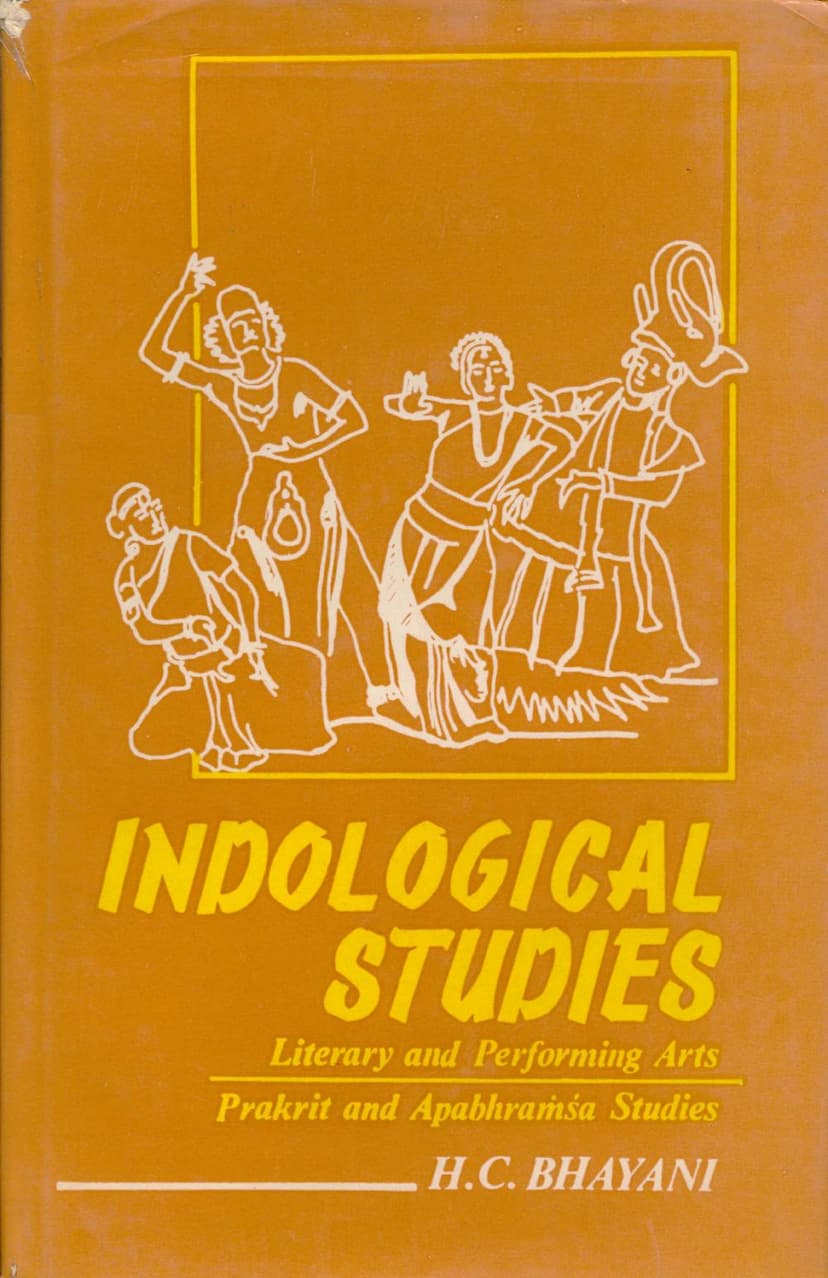Indological Studies
Added to library: September 1, 2025

Summary
The book "Indological Studies: Literary and Performing Arts, Prakrit and Apabhramśa Studies" by H. C. Bhayani is a collection of 33 scholarly papers and articles on various aspects of Indology. The author, a renowned Indologist, delves into a wide range of subjects, including poetics, dramaturgy, drama, Jain literature, and critically examines Prakrit and Apabhramśa studies.
Bhayani's work is characterized by its deep critical acumen and presentation of previously unknown or less understood facets of these subjects. He supports his arguments by quoting extensively from Sanskrit, Prakrit, Apabhramśa, and Old Gujarati texts. The book is deemed highly useful for researchers and general readers of Indology due to its meticulous evaluation of literary works.
The collection is divided into two main parts:
Part I: Literary and Performing Arts This section explores various aspects of Indian performing arts and literary traditions. Key topics include:
- Literary Genres: Papers discuss concepts like Paryāyabandha and Saṁghāta, analyzing their etymology, definition, and relationship with terms like Vrajyā. The text also examines specific poetic compositions and their classifications.
- Sanskrit Drama: The role of verses in Sanskrit drama is analyzed, focusing on their function in characterization, setting the mood, and providing descriptive information. Specific plays by Kālidāsa and others are examined.
- Musical Forms and Dance: The book sheds light on various song types and dance modes prevalent in ancient and medieval India, such as Dhruvās, Carcari songs, Dombikā, Siḍgaka, and Tarāņā singing. It traces their origins, characteristics, and evolution through Prakrit and Apabhramśa literature.
- Folk Elements: The influence of folk traditions on classical drama is explored, with references to the Bhāvāi and various Uparūpakas.
- Musical Instruments: Early literary references to instruments like the Sārangi and Rāvaņahasta are presented.
- Jain Literature and Performing Arts: This section specifically highlights the contributions of Jain literature to the performing arts, including audio-visual presentations of narratives, dramatic types like Utsrşţikānka, Dima, Vithi, and various Uparūpakas such as Bhāņaka, Dombilikā, and Siḍgaka.
Part II: Prakrit and Apabhraṁśa Studies This section focuses on the linguistic and literary contributions found in Prakrit and Apabhramśa literature. Topics covered include:
- Prakrit Poetry: The papers analyze Prakrit verses attributed to poets like Pādalipta, examining their authenticity and linguistic features. The book also discusses the Gāthā-muktāvalī as a newly discovered recension of Hāla's Sapta-śataka.
- Prakrit and Apabhramśa Rāmāyaṇas: The evolution of the Rāmāyaṇa narrative in these languages is discussed, highlighting the significant alterations and unique Jain interpretations of characters and events. It also touches upon the works of Apabhramśa poets like Caturmukha.
- Kṛṣṇa Literature: The childhood exploits of Kṛṣṇa, including his amorous activities with Gopis like Rādhā, Pāli, Dhanyā, and Cārukēśī, are explored through early Prakrit and Apabhramśa texts.
- Jain Legends: The evolution of the Sanatkumāra-carita and the Sūdra-vatsa-kathā are traced through various stages of literary development within Jain tradition.
- Folktale Studies: The book examines the Prakrit sources of certain Indian popular tale-types and motifs, including "The Magic Bird-Heart," "The Danced-out Shoes," and "What Should I Have Done," demonstrating the significant contribution of Prakrit literature to understanding the origins and transmission of these stories.
- Linguistic Analysis: The text provides insights into Apabhramśa passages found in the works of Abhinavagupta (Tantrasāra and Parātrimśikā-vrtti), analyzing their metres and grammatical characteristics. It also discusses the Prakrit and Deśa-bhāṣā passages in Someśvara's Mānasollāsa.
The book serves as a valuable resource for scholars and students interested in the rich tapestry of Indian literary, artistic, and linguistic heritage, particularly focusing on the often-overlooked contributions of Prakrit and Apabhramśa traditions, especially within the Jain context.